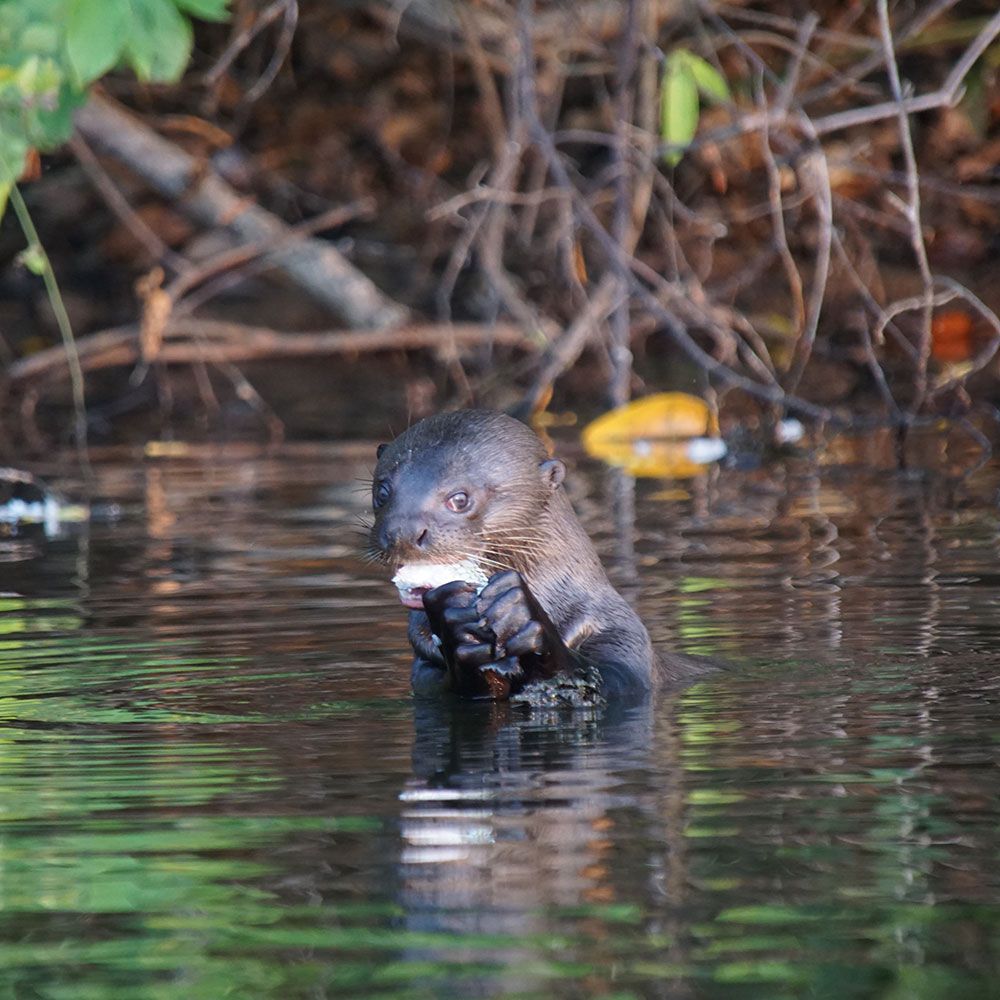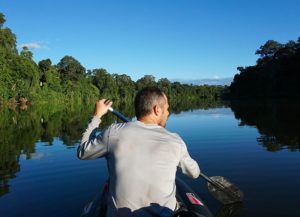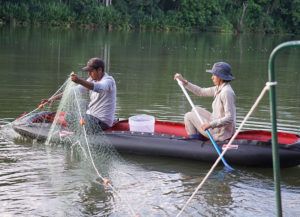Giant otters
Project profile
Giant otters
Funding for this project has now finished
Study species: Giant otter (Pteronura brasiliensis)
Project location: Peru’s Manu National Park and Madre de Dios river
Species fact: Giant otters are the largest otter species in the world. Adults can weigh up to 30 kilograms and reach a length of 6 feet.
Problem: Human activities, particularly small-scale gold mining, are causing the destruction of the aquatic habitats inhabited by giant otters and a decrease in the quantities of fish giant otters depend on.


Goal 1
Surveying protected and disturbed areas for otter presence and habitat destruction to examine the effects of gold mining on giant otter distribution and abundance.

Goal 2
Quantifying fish availability and mercury contamination to understand how human activities can affect giant otters.

Goal 3
Working with local communities to understand their perceptions towards giant otters and aquatic ecosystems and developing environmental education programs.

What your donations achieved
1 Over five years, Adi and his team followed 15 giant otter groups. They discovered otters living in lakes in protected areas with higher fish abundance, foraged more efficiently and so spent less time looking for food.
2 Adi’s team showed that lakes in areas with gold-mining had lower fish numbers, polluted water and degraded bank habitats.
3 Adi’s work showed otters can survive in degraded and lower-quality habitats such as old mining ponds and those lakes with lower fish abundance. If these areas are restored, both fish and otter numbers can bounce back.
Thank you to all our donors who helped us fund this work. You can help us support more projects like this with a donation today:

